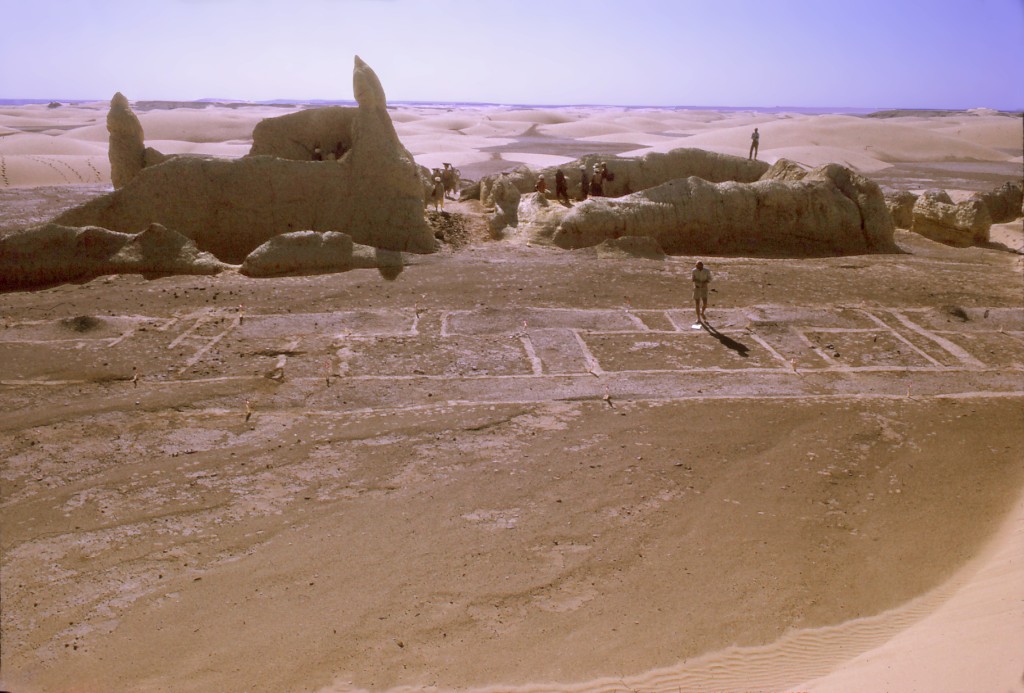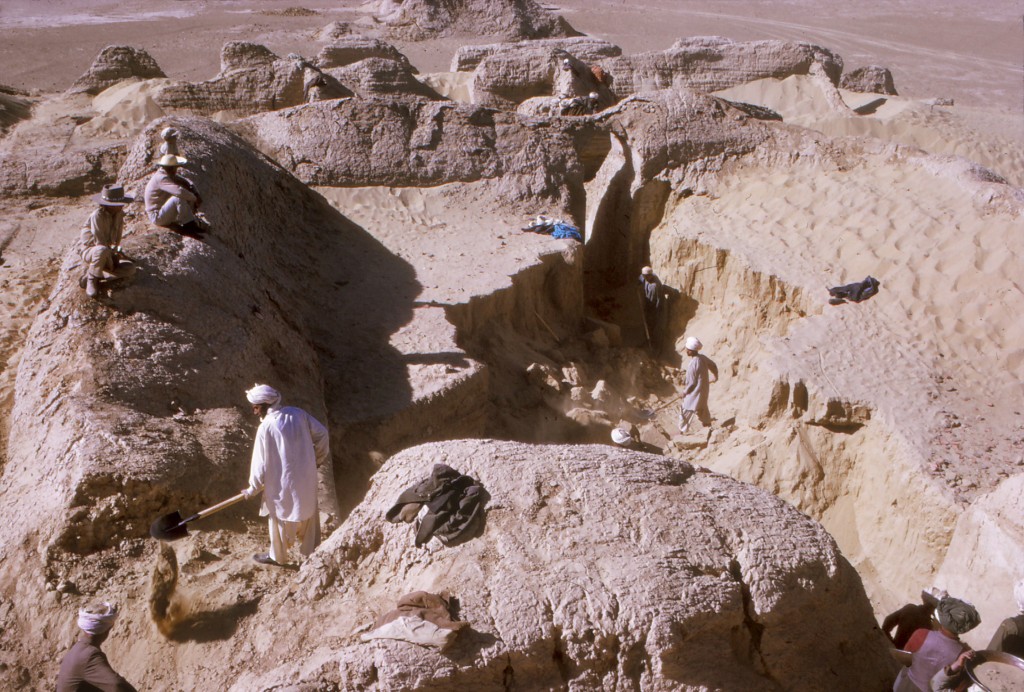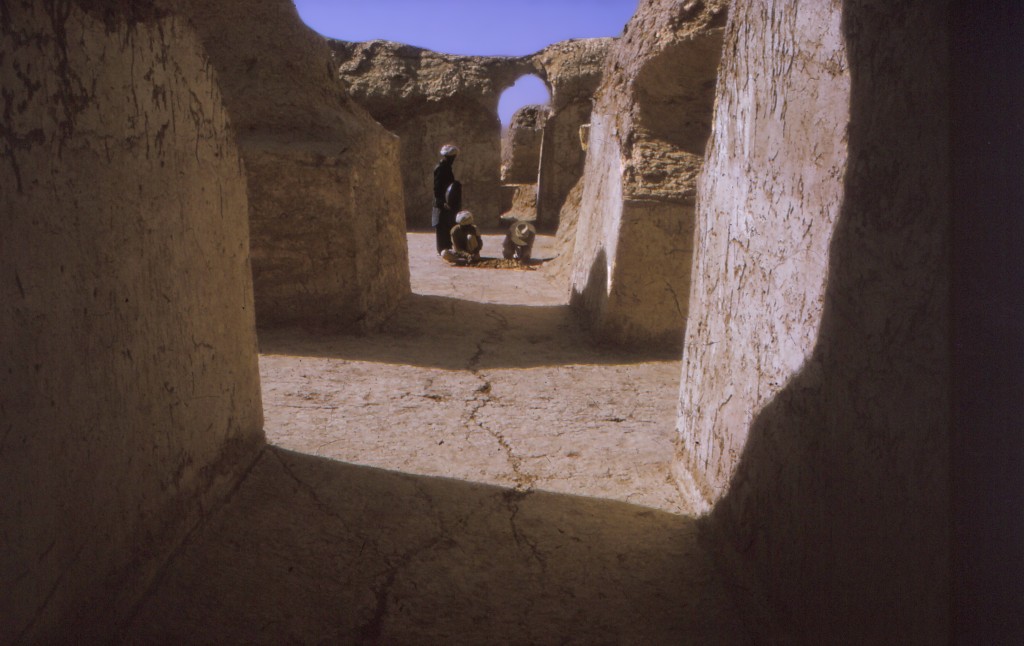Temple 215
Latitude: 30.51387732 Longitude: 62.03260473
Enlarged satellite view
A large Zoroastrian fire temple with fine, heavily plastered walls and flooring was found at the south edge of the Sar-o-Tar sand dunes on a low rise in the flood plain. Excavated in 1973, coins found here and carbon-14 samples indicate it was built in the Parthian period and was filled with sand shortly after abandonment in the 3rd or 4th century CE. The site is built around a central shrine room that probably contained a portable hearth to conduct fire ceremonies. Around the central room was an ambulatory walkway, an essential feature in fire temple architecture, and a large iwan on the eastern side. Wings on three other sides and an adjacent building were used for pilgrims and temple personnel and for storing offerings.





